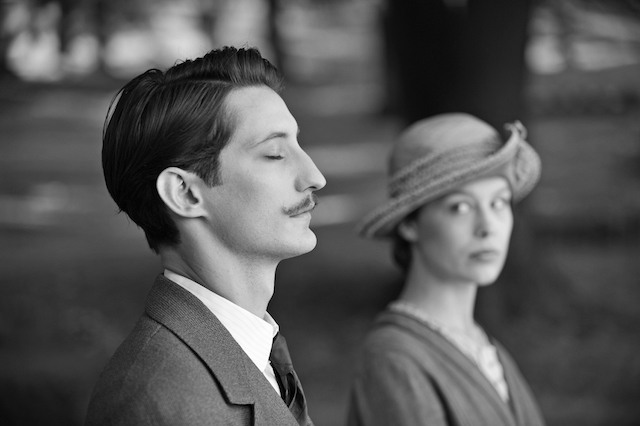‘No Home Movie’ The death, allegedly by her own hand, of Chantal Akerman on Tuesday inevitably changes “No Home Movie.” The film, which has now become the filmmaker’s swan song, bows at the New York Film Festival only a day after her passing was made public. Even viewed before her death, it seemed, like much of her work, like a film about ghosts — a study of mere duration, of people who at one with spaces, and, most glaringly, of Akerman’s lovable sparkplug of a mother, who too has since slipped off into the infinite. Maybe once its unending long takes of nothing much, or simply in fact nothing at all, seemed combative to modern viewers used to constant stimulation. Now it seems like a record of non-events even Akerman didn’t know would become special. RELATED: Chantal Akerman, legendary Belgian filmmaker, dies at 65 Akerman was a diverse filmmaker who, in addition to making various breeds of experimental cinema, even did fluffy screwball comedies (“A Couch in New York,” with Juliette Binoche and William Hurt) and musicals (“Golden Eighties”). But her name was most associated with her minimalist works, chiefly 1975’s “Jeanne Dielman, 23 Quai Du Commerce, 1080 Bruxelles,” which fills three hours and 20 minutes with epic long takes of a woman’s (Delphine Seyrig) menial housework, gradually building to her last-minute implosion. “No Home Movie” goes even more extreme into nothingness. It’s closer to her 1972 short “Hotel Monterey,” where she plops her camera down inside the dingy confines of a New York hotel, forcing us to stare, for minutes on end, at the innards of a place forgotten by time. The place most often visited in “No Home Movie” isn’t really forgotten so much as only ever inhabited by a few: the apartment belonging to Akerman’s mom. We’re not told much about her mother, though she’s cropped up often in her daughter’s work, including 1977’s “News from Home,” in which Akerman combines shots of grimy ’70s NYC — which nearly four decades later look like an alien landscape — with doting letters from her mom read on the soundtrack. Sometimes Akerman engages with her directly, but it’s mostly chitchat, with one attempt to get her to open up about surviving the Holocaust that ultimately slides back into idle conversation. There are two separate Skype conversations, both mostly love fests, and both featuring Akerman stating outright that, by filming her talking to her mom over computer, she’s trying to point out that distance, in the Internet age, no longer exists. That Akerman included her stating this idea both times, almost verbatim, is confrontational — “Look, she’s underlining and italicizing a major theme, twice! Doesn’t she edit these things?” — as well as sly. That’s because the eradication of distance isn’t really what “No Home Movie” is about. No doubt the deeper complexities of the work are personal to Akerman and, as such, died along with her. But the film also allows us to experience something that’s generally personal and, most obviously, bittersweet. There are long takes of Akerman’s mother as she does nothing at all. She sits in a chair and reads a magazine for a few minutes. She stands in another room, and the way the shot is set up we can barely see her. Towards the end she gets sick and she lays open-mouthed in a recliner as a nurse tends to her. RELATED: Your guide to doing the 2015 New York Film Festival This could be (and has been) criticized as what the title claims it isn’t, which is mere home movie footage. Anyone can shoot this stuff, detractors have said, as they’ve said about plenty of modern art works that appear to have required little physical or even creative effort — as though effort were the same as artistic prowess. But what Akerman shows is special to her, and she wants it, in some capacity, to be special to us by simply existing. She knows that her name alone will get this into festivals, and will get it to be seriously considered. She wants that to be part of the conversation — but she also doesn’t want the conversation to end there. And for the record, the shots themselves aren’t just her putting the camera on a tripod wherever and hitting record, then editing it all together and raking in the raves (and pans, and boos). Each shot is carefully chosen, usually so we can’t see exactly what’s going on. There are shots of backs, of people in darkened rooms, of people in other rooms whom we can’t see. The way it’s shot qualifies “No Home Movie” as a work of post-human cinema, in that it deliberately displaces focus away from humans. But it’s also a work of post-human cinema that by being post-human is emphatically pro-human, because it forces the viewer to find significance in people who can’t always bee seen and aren’t, to be blunt, doing anything particularly interesting. It marks time that will one day pass, which may not be even passably fascinating to outside parties and will surely even be forgotten by those who actually lived it. But the mundanity is what makes it interesting. What happens in “No Home Movie” is the stuff that doesn’t get shown in movies. In its deliberately boring way, it’s riveting — cinema that makes the inessential powerfully, devastatingly essential. This was clear even before Akerman’s death. Her passing only brings this into sharper relief. “No Home Movie” screens three times at the New York Film Festival (though currently tickets are stand-by only). For times and locations visit the NYFF site.
4 Globes
NYFF Review: Chantal Akerman’s swan song, ‘No Home Movie’
Follow Matt Prigge on Twitter @mattprigge


















